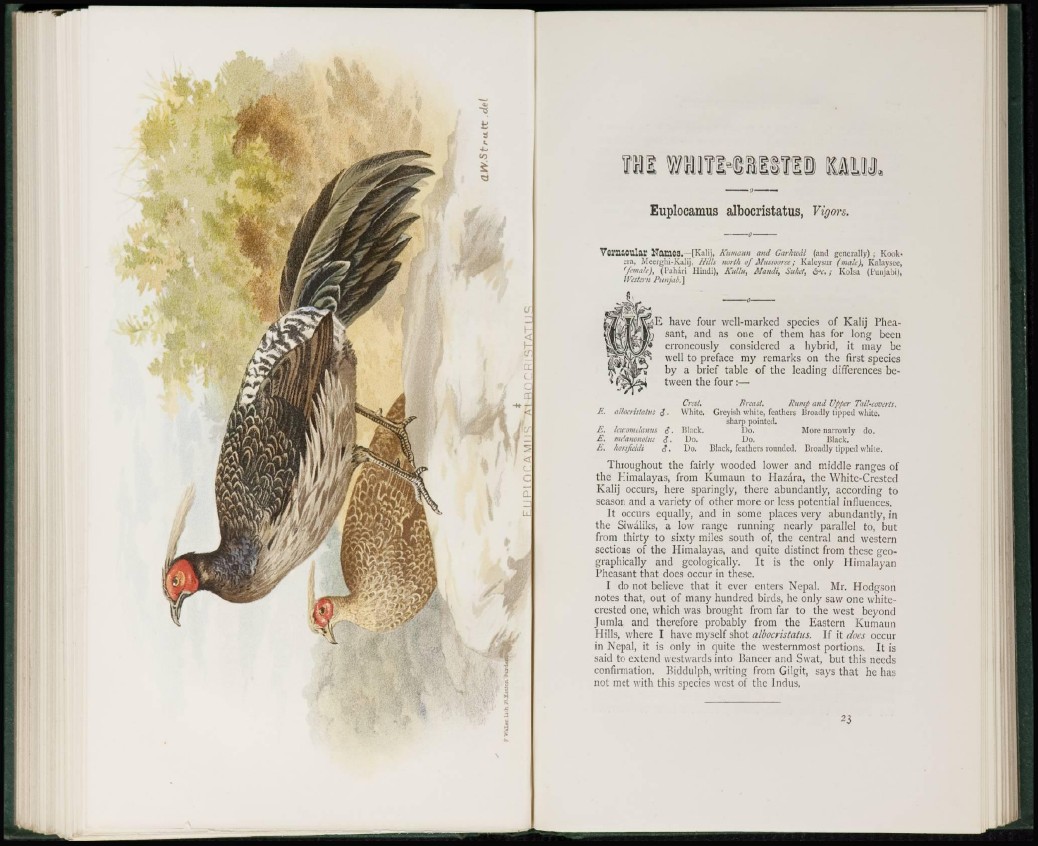
Euplocamus albocristatus, Vigors.
VomaCUlar NamCS.-[Kalij, Kumaun and Garhwal (and generally) ; Kookera,
Meerghi-Kalij, Hills uort/i of Mitssooree; Kaleysur (mall), Kalaysee,
(female), (Pahari Hindi), Kullit, Mandi, Sutet, <2°c. ; Kolsa (Punjabi),
Western Punjab.]
E have four well-marked species of Kalij Pheasant,
and as one of them has for long been
erroneously considered a hybrid, it may be
well to preface my remarks on the first species
by a brief table of the leading differences between
the four:—
Crest. Breast. Rump and Upper TalUcaverts.
E. al/'CT-ristatus d". White. Greyish white, feathers broadly lipiied white,
sharp pointed.
£. leueomjauus o*. black. Do. More narrowly do.
E. mttanonottu 3. Do. Do, black.
E. IwrsficUU 8. Do. Black, feathers rounded. Broadly tipped while.
Throughout the fairly wooded lower and middle ranges of
the Himalayas, from Kumaun to Hazara, the White-Crested
Kalij occurs, here sparingly, there abundantly, according to
season and a variety of other more or less potential influences.
It occurs equally, and in some places very abundantly, in
the Siwaliks, a low range running nearly parallel to, but
from thirty to sixty miles south of, the central and western
sections of the Himalayas, and quite distinct from these geographically
and geologically. It is the only Himalayan
Pheasant that does occur in these.
I do not believe that it ever enters Nepal. Mr. Hodgson
notes that, out of many hundred birds, be only saw one whitecrested
one, which was brought from far to the west beyond
Jumla, and therefore probably from the Eastern Kumaun
Hills, where I have myself shot albocristatits. If it docs occur
in Nepal, it is only in quite the westernmost portions. It is
said to extend westwards into Baneer and Swat, but this needs
confirmation. Biddulph, writing from Gilgit, says that he has
not met with this species west of the Indus,